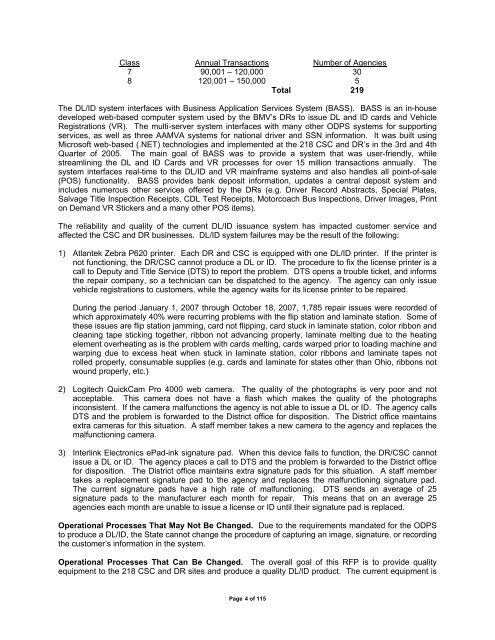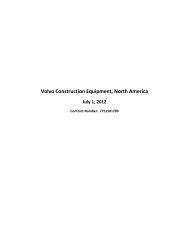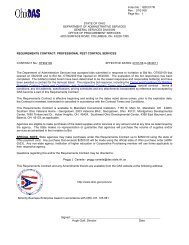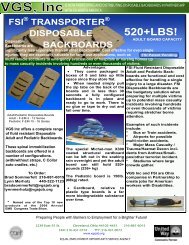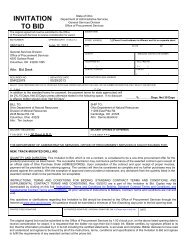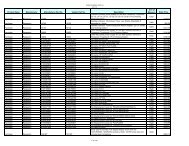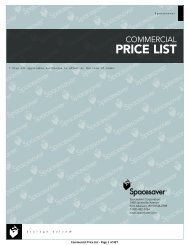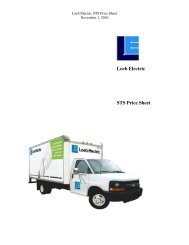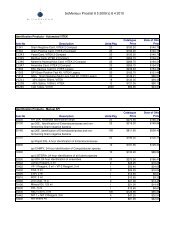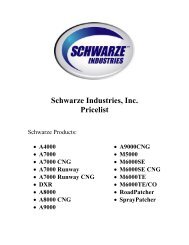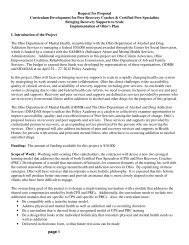REQUEST FOR PROPOSALS RFP NUMBER: 0A1031 DATE ISSUED
REQUEST FOR PROPOSALS RFP NUMBER: 0A1031 DATE ISSUED
REQUEST FOR PROPOSALS RFP NUMBER: 0A1031 DATE ISSUED
Create successful ePaper yourself
Turn your PDF publications into a flip-book with our unique Google optimized e-Paper software.
Class Annual Transactions Number of Agencies<br />
7 90,001 – 120,000 30<br />
8 120,001 – 150,000 5<br />
Total 219<br />
The DL/ID system interfaces with Business Application Services System (BASS). BASS is an in-house<br />
developed web-based computer system used by the BMV’s DRs to issue DL and ID cards and Vehicle<br />
Registrations (VR). The multi-server system interfaces with many other ODPS systems for supporting<br />
services, as well as three AAMVA systems for national driver and SSN information. It was built using<br />
Microsoft web-based (.NET) technologies and implemented at the 218 CSC and DR’s in the 3rd and 4th<br />
Quarter of 2005. The main goal of BASS was to provide a system that was user-friendly, while<br />
streamlining the DL and ID Cards and VR processes for over 15 million transactions annually. The<br />
system interfaces real-time to the DL/ID and VR mainframe systems and also handles all point-of-sale<br />
(POS) functionality. BASS provides bank deposit information, updates a central deposit system and<br />
includes numerous other services offered by the DRs (e.g. Driver Record Abstracts, Special Plates,<br />
Salvage Title Inspection Receipts, CDL Test Receipts, Motorcoach Bus Inspections, Driver Images, Print<br />
on Demand VR Stickers and a many other POS items).<br />
The reliability and quality of the current DL/ID issuance system has impacted customer service and<br />
affected the CSC and DR businesses. DL/ID system failures may be the result of the following:<br />
1) Atlantek Zebra P620 printer. Each DR and CSC is equipped with one DL/ID printer. If the printer is<br />
not functioning, the DR/CSC cannot produce a DL or ID. The procedure to fix the license printer is a<br />
call to Deputy and Title Service (DTS) to report the problem. DTS opens a trouble ticket, and informs<br />
the repair company, so a technician can be dispatched to the agency. The agency can only issue<br />
vehicle registrations to customers, while the agency waits for its license printer to be repaired.<br />
During the period January 1, 2007 through October 18, 2007, 1,785 repair issues were recorded of<br />
which approximately 40% were recurring problems with the flip station and laminate station. Some of<br />
these issues are flip station jamming, card not flipping, card stuck in laminate station, color ribbon and<br />
cleaning tape sticking together, ribbon not advancing properly, laminate melting due to the heating<br />
element overheating as is the problem with cards melting, cards warped prior to loading machine and<br />
warping due to excess heat when stuck in laminate station, color ribbons and laminate tapes not<br />
rolled properly, consumable supplies (e.g. cards and laminate for states other than Ohio, ribbons not<br />
wound properly, etc.)<br />
2) Logitech QuickCam Pro 4000 web camera. The quality of the photographs is very poor and not<br />
acceptable. This camera does not have a flash which makes the quality of the photographs<br />
inconsistent. If the camera malfunctions the agency is not able to issue a DL or ID. The agency calls<br />
DTS and the problem is forwarded to the District office for disposition. The District office maintains<br />
extra cameras for this situation. A staff member takes a new camera to the agency and replaces the<br />
malfunctioning camera.<br />
3) Interlink Electronics ePad-ink signature pad. When this device fails to function, the DR/CSC cannot<br />
issue a DL or ID. The agency places a call to DTS and the problem is forwarded to the District office<br />
for disposition. The District office maintains extra signature pads for this situation. A staff member<br />
takes a replacement signature pad to the agency and replaces the malfunctioning signature pad.<br />
The current signature pads have a high rate of malfunctioning. DTS sends an average of 25<br />
signature pads to the manufacturer each month for repair. This means that on an average 25<br />
agencies each month are unable to issue a license or ID until their signature pad is replaced.<br />
Operational Processes That May Not Be Changed. Due to the requirements mandated for the ODPS<br />
to produce a DL/ID, the State cannot change the procedure of capturing an image, signature, or recording<br />
the customer’s information in the system.<br />
Operational Processes That Can Be Changed. The overall goal of this <strong>RFP</strong> is to provide quality<br />
equipment to the 218 CSC and DR sites and produce a quality DL/ID product. The current equipment is<br />
Page 4 of 115


